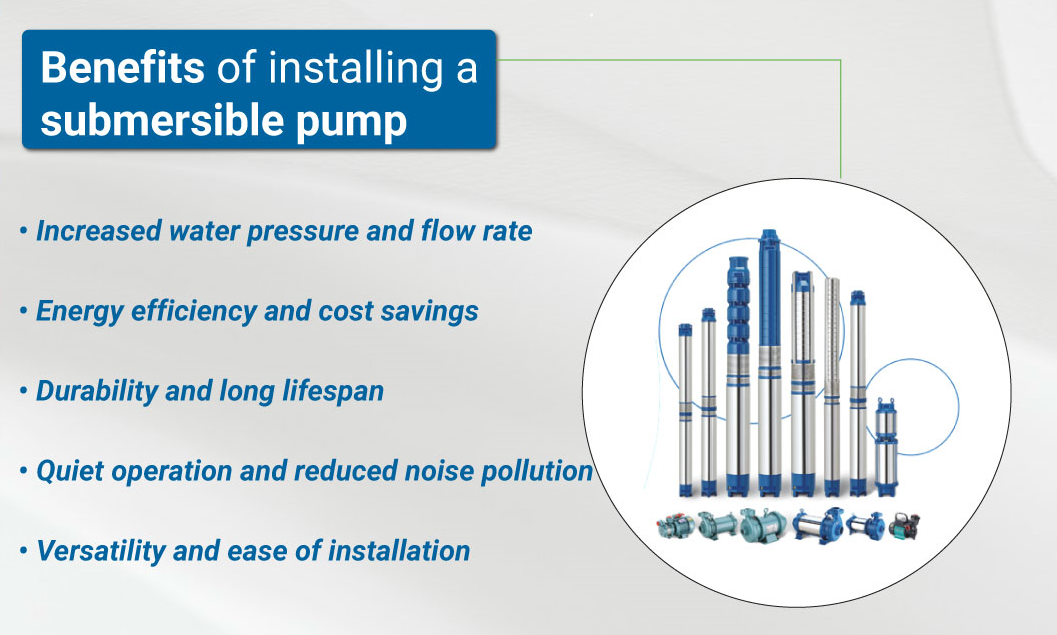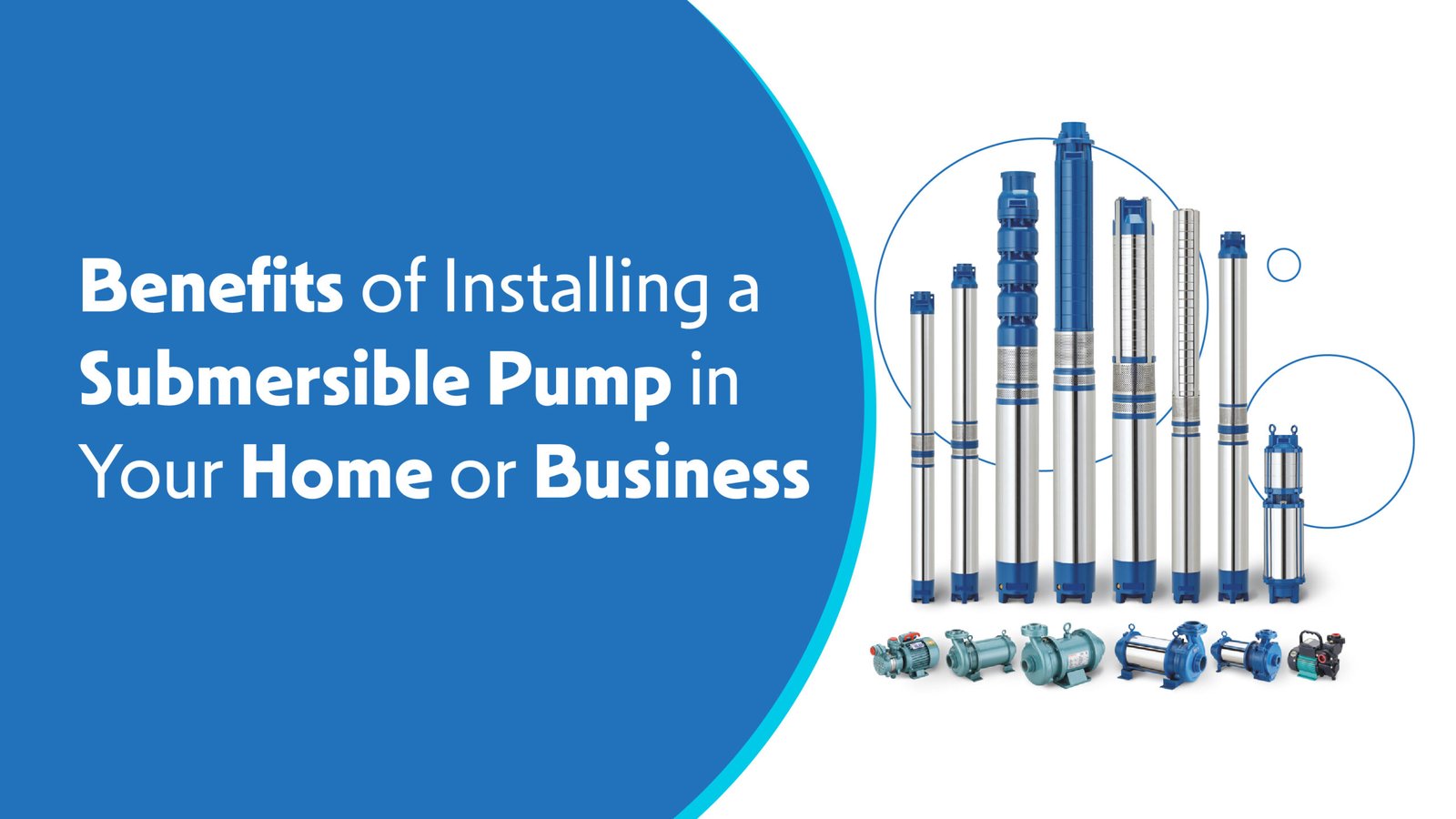Discover the hidden benefits of installing a submersible pump in your home or business. These versatile and efficient pumps are not only essential for managing water levels, but they offer a range of benefits that may surprise you. From saving energy and reducing utility costs to preventing basement flooding and boosting irrigation systems, submersible pumps provide a reliable and effective solution. With their ability to lower water levels automatically and handle large volumes of water with ease, these pumps are especially beneficial for areas prone to heavy rainfall or water table fluctuations. Whether you need to pump out excess water or boost water pressure, a submersible pump is a smart investment that can improve your daily life or business operations. Don’t miss out on the advantages of this innovative technology. Explore the benefits of installing a submersible pump today and discover the powerful impact it can have on your home or business.
How submersible pumps work
Submersible pumps are designed to be completely submerged in water, which sets them apart from other types of pumps. They consist of a sealed motor that is waterproof and a pump section that is responsible for drawing in and pushing out water. The motor is typically encased in a hermetically sealed container that prevents water from entering and damaging the internal components. This unique design allows submersible pumps to operate efficiently and effectively, even when fully submerged.
One of the main advantages of submersible pumps is their ability to handle large volumes of water. Due to their proximity to the water source, they can pump water directly from its source without the need for additional suction mechanisms. This makes submersible pumps ideal for applications such as draining flooded basements, emptying swimming pools, and pumping water from wells or underground water sources. The powerful motor and pump combination allows submersible pumps to handle high flow rates and pump water over long distances.
Submersible pumps also have the advantage of being self-priming, which means they can start pumping water without the need for manual priming or additional equipment. Once the pump is submerged and the motor is activated, it automatically begins drawing in water and expelling it through the pump section. This feature eliminates the need for manual priming and reduces the risk of damage to the pump or motor.
Benefits of installing a submersible pump

Increased water pressure and flow rate
Installing a submersible pump can significantly increase water pressure and flow rate in your home or business. Unlike traditional pumps that rely on external pressure to push water, submersible pumps are directly immersed in water, allowing for more efficient water delivery. This is especially beneficial in areas with low water pressure or when you need to boost water pressure for specific applications such as sprinkler systems or showers.
Submersible pumps can deliver water at high pressures, ensuring that every tap, shower, or irrigation system in your home or business receives an adequate supply of water. Whether you’re looking to improve water pressure for a comfortable shower experience or need to ensure that your irrigation system is delivering water evenly to your plants or crops, a submersible pump can provide the necessary boost in pressure and flow rate.
Energy efficiency and cost savings
Submersible pumps are known for their energy efficiency, which can lead to substantial cost savings over time. These pumps are designed to operate with minimal energy consumption, making them a sustainable choice for homes and businesses alike. The efficient motor design and direct immersion in water result in reduced energy loss, allowing submersible pumps to convert a higher percentage of electrical input into useful work.
Compared to traditional pumps, which may require additional equipment such as pressure tanks or boosters to achieve the desired water pressure, submersible pumps operate more efficiently and eliminate the need for extra energy-consuming components. Additionally, submersible pumps are designed to automatically adjust their speed and power consumption based on the water demand, further optimizing energy usage and reducing utility costs.
In the long run, the energy efficiency of submersible pumps can lead to significant cost savings, especially for businesses that rely on water-intensive operations or homeowners who want to reduce their monthly utility bills. By choosing a submersible pump, you not only contribute to a greener environment but also enjoy the financial benefits of reduced energy consumption.
Durability and long lifespan
Submersible pumps are built to last, thanks to their durable construction and high-quality materials. The hermetically sealed motor and pump section protect the internal components from water damage, ensuring their longevity and reliability. Unlike other types of pumps that may be susceptible to corrosion or wear and tear, submersible pumps are designed to withstand harsh conditions and continuous use.
The waterproof motor enclosure prevents water from entering the pump, reducing the risk of electrical failure or motor damage. Additionally, submersible pumps are often made with corrosion-resistant materials such as stainless steel or thermoplastic, which further enhances their durability and resistance to rust or degradation over time.
The long lifespan of submersible pumps not only provides peace of mind but also translates into savings on maintenance and replacement costs. With proper installation and regular maintenance, a submersible pump can serve you for many years without any significant issues, making it a cost-effective investment in the long run.
Quiet operation and reduced noise pollution
If you’ve ever had a noisy pump system disrupt your sleep or work environment, you’ll appreciate the quiet operation of submersible pumps. Unlike traditional pumps that are located above ground and connected to piping systems, submersible pumps are submerged in water, which significantly reduces noise levels. The surrounding water acts as a natural sound barrier, muffling the operation of the pump and minimizing noise pollution.
The quiet operation of submersible pumps makes them suitable for various applications where noise reduction is important, such as residential areas, hospitals, schools, or office buildings. Whether you’re installing a pump in your home’s basement or using it for commercial purposes, the reduced noise levels ensure a peaceful and comfortable environment for everyone.
Versatility and ease of installation
Submersible pumps are highly versatile and can be installed in various water-related applications. From residential sump pits and sewage systems to commercial irrigation and industrial wastewater management, submersible pumps can handle a wide range of water pumping needs. Their compact design and ability to operate in confined spaces make them suitable for both indoor and outdoor installations.
Installing a submersible pump is relatively straightforward, especially when compared to other types of pumps that may require complex plumbing or additional infrastructure. In most cases, a submersible pump can be installed directly in the water source, eliminating the need for additional suction mechanisms or extensive piping systems. This ease of installation saves both time and money, allowing you to set up a reliable water management system quickly and efficiently.
Maintenance and troubleshooting tips for submersible pumps.
To ensure optimal performance and longevity, regular maintenance and troubleshooting are essential for submersible pumps. Here are some tips to keep your pump in top condition:
- Regularly inspect the pump for any signs of damage or wear. Pay attention to the motor, pump impeller, and power cable connections.
- Clean the pump and remove any debris that may have accumulated in the intake or pump housing. This will prevent clogging and improve pump efficiency.
- Check the motor oil levels and replace if necessary. Consult the manufacturer’s guidelines for the recommended oil type and intervals for oil changes.
- Test the pump regularly to ensure it is functioning properly. Monitor water pressure, flow rate, and any unusual noises or vibrations.
- If you encounter any issues with the pump, such as reduced performance or unusual sounds, consult the manufacturer’s troubleshooting guide or contact a professional for assistance.
By following this maintenance and troubleshooting tips, you can prolong the lifespan of your submersible pump and avoid costly repairs or replacements.
Conclusion: Is a submersible pump right for you?
Installing a submersible pump in your home or business offers a multitude of benefits, from increased water pressure and energy efficiency to durability and quiet operation. Whether you need to manage water levels, boost water pressure, or prevent basement flooding, a submersible pump provides a reliable and effective solution.
Before deciding on a submersible pump, assess your specific needs and consider factors such as water demand, desired water pressure, and the size of the area to be pumped. Consult with a submersible pump Manufacturer or Submersible Parts Suppliers in Ahmedabad to ensure you select the right pump size and type for your application.
With their versatility, ease of installation, and long lifespan, submersible pumps are a smart investment that can improve your daily life or business operations. Don’t miss out on the hidden benefits of this innovative technology. Explore the advantages of installing a submersible pump today and experience the powerful impact it can have on your home or business.


